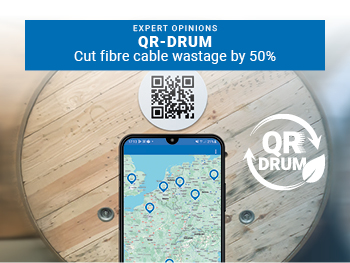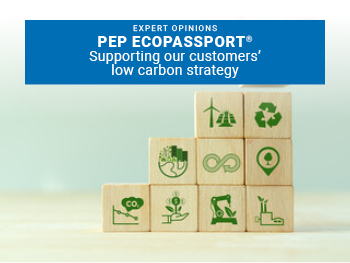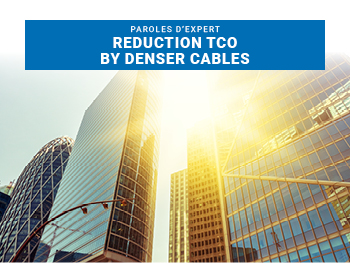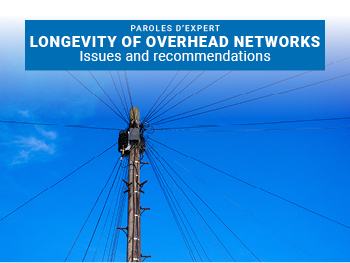Waterproof gel in optical cables: Both useful and impractical at the same time
With fibre, contact with water must be avoided for various reasons. The H--O bonding leads to significant optical attenuation around 1400nm. Water can also cause harmful physical stress. This means optical cable must be sealed. It must not be possible for water to penetrate the cable, nor to be able to penetrate the module (loose tube, micro loose, micro module etc.).
Gel is commonly used inside modules for technical and economic reasons. It does the job perfectly. However, gel also has a down side. It’s a "pollutant" when splicing two fibres, and causes optical losses. So all traces of gel must be removed from the fibres before they are spliced. This cleaning operation is therefore a "pain" in the field. ACOME has invented a new optical module structure that makes it possible to do away with it.
The interest of waterproof gel
Waterproof gel fills the cores of the modules containing the optical fibres.
Gel is water repellent and creates a watertightness by filling the module, thus preventing longitudinal and radial flows.
It’s a mechanical barrier between the module opening tool blade and the fibre: it provides protection when optical fibre modules require the use of a tool (e.g. Loose Tube).
Waterproof gel constraints
Even though it fulfils its waterproof role, the fact remains that gel also has many cost, safety and environment related constraints.
Degreasing, a time-consuming but essential step
- Up to 1H for a 72-fibre cable
As discussed in the Nanomodule for the UK: a breakthrough technology fighting back against rollout inflation costs, degreasing the fibres requires between 5 and 10 minutes per module. For example, for a 6-module cable with 12 fibres per module, the time needed to prepare the modules is estimated at 30 minutes to 1 hour. In the context of massive optical cable deployments, as FTTH can be, this operation is an important part of the installation costs.
- The risks of insufficient degreasing:
- One of the properties of gel is that it makes the impurities naturally present in the environment stick to the fibre
- So, if a fibre isn’t properly cleaned, these impurities remain inside the trays and can cause complications down the line
- If the gel and impurities aren’t properly cleaned before splicing, the optical losses may be beyond the sanctions, and most probably will need to be re-spliced
The use of solvents is part and parcel of gel cleaning
The fibre needs to be carefully prepared before splicing. Cleaning is mandatory to prevent impurities being "trapped" during the splicing process, otherwise known as "inclusions".
- Dry cleaning consists of using specific cleaning fabrics (wipes, etc.). It’s suitable for so-called dry fibres, but won’t be able to dissolve the gel’s oil-based materials.
- Wet cleaning involves using a solvent with appropriate tools to degrease the optical fibre. This type of solvent is very often corrosive and care must be taken to avoid contaminating the fibre.
- Wipes and solvents are actually used simultaneously in the field, being the most pragmatic and effective method.
Solvents, effective for degreasing but also a hazard
- A health hazard
From a health and safety perspective, some degreasing products are health hazards (inhalation, swallowing, skin contact). Organic solvents such as acetone, tetrachloroethylene or trichloroethylene can cause eye and respiratory tract irritation, headaches, dizziness and nausea. In cases of prolonged unprotected exposure (without masks and gloves), the solvent can cause nervous system depression. Safety standards and procedures must be strictly followed.
- An environmental hazard
Furthermore, these organic solvents are considered to be atmospheric pollutants. They can cause air quality problems (e.g. formation of polluted mist), and also contaminate groundwater or watercourses in cases of uncontrolled releases.
Deadline and cost related pressure regularly results in this polluting waste not being managed. Without proper equipment, solvent is left on the ground at the end of the job, and if this happens, the ground is usually not decontaminated before the site is left. Often, soiled wipes are not put into a specific treatment circuit.
Solvents, the ACOME recommendation
When solvent is required, the ACOME ACOPTIC® Guide : Cable Storage, Transport and Installation Rules recommends the use of a non-fluff wipe and the use of isopropanol, ethanol or kerdane.
Waterproof gel is not inevitable
Compact Tube technology has already drastically reduced gel quantities
In the 2000s, ACOME developed a technological brick called the Compact Tube. In addition to the time savings brought by the material’s flexibility, its larger diameter also greatly reduces the quantity of gel and as a result saves cleaning time compared to loose tubes.
You can read the complete article comparing Loose Tube, Micro-Loose Tube and Compact Tube technologies by clicking here
Nanomodules, a gel-free tube breakthrough innovation
ACOME has invented patented technology, known as Nanomodule, which was marketed in its first Nanomodule Ultra Light Weight cables in the United Kingdom in September 2022.

This fibre bundling technology provides unparalleled fibre density. The benefits are many and this technology is far from having reached its full potential. For example, in the United Kingdom, ULW Nanomodule 96-fibre cables are breaking a glass ceiling, and delivering total cost of ownership (TCO) savings in excess of 30%. On the environmental side, the carbon footprint improvement is of the same order of magnitude. ULW cables are already PIA approved and can be freely used on BT/Openreach poles. More information on this technology is available in an ACOME Publication!

On the watertightness aspect, this technology is also a breakthrough, saving time, and therefore money, during installation. Nanomodules use absolutely no waterproof gel. In fact, the innovation lies in the fact that the Nanomodule is made waterproof by the same system that makes the cable waterproof, namely a swettable line. Two birds with one stone.
This means that solvent is no longer needed to clean the fibre. Preparation is simpler and much faster. By avoiding the use of solvents, the risks to people and the environment are automatically eliminated.
How to save thousands of pounds in overhead FTTH rollout ?











